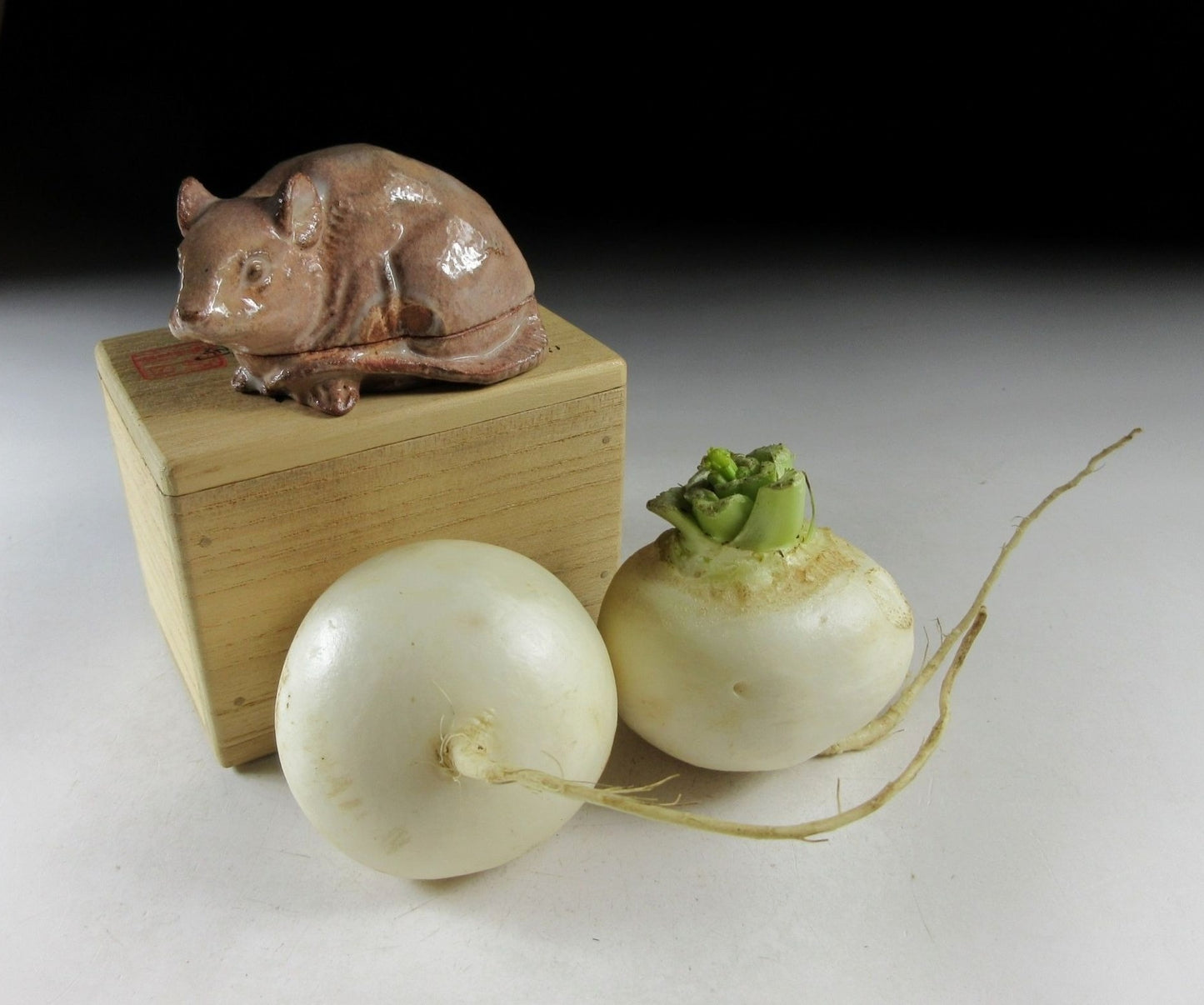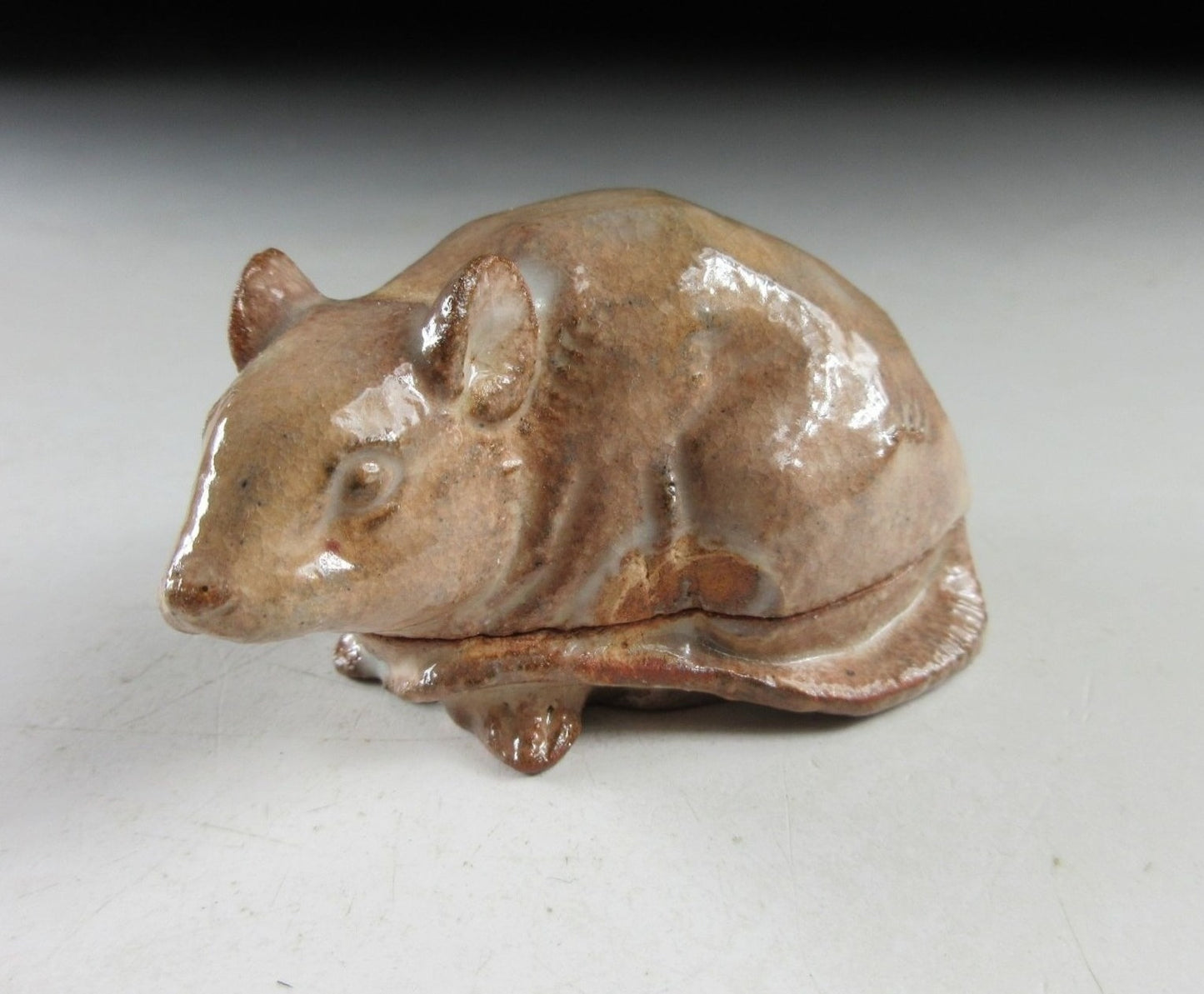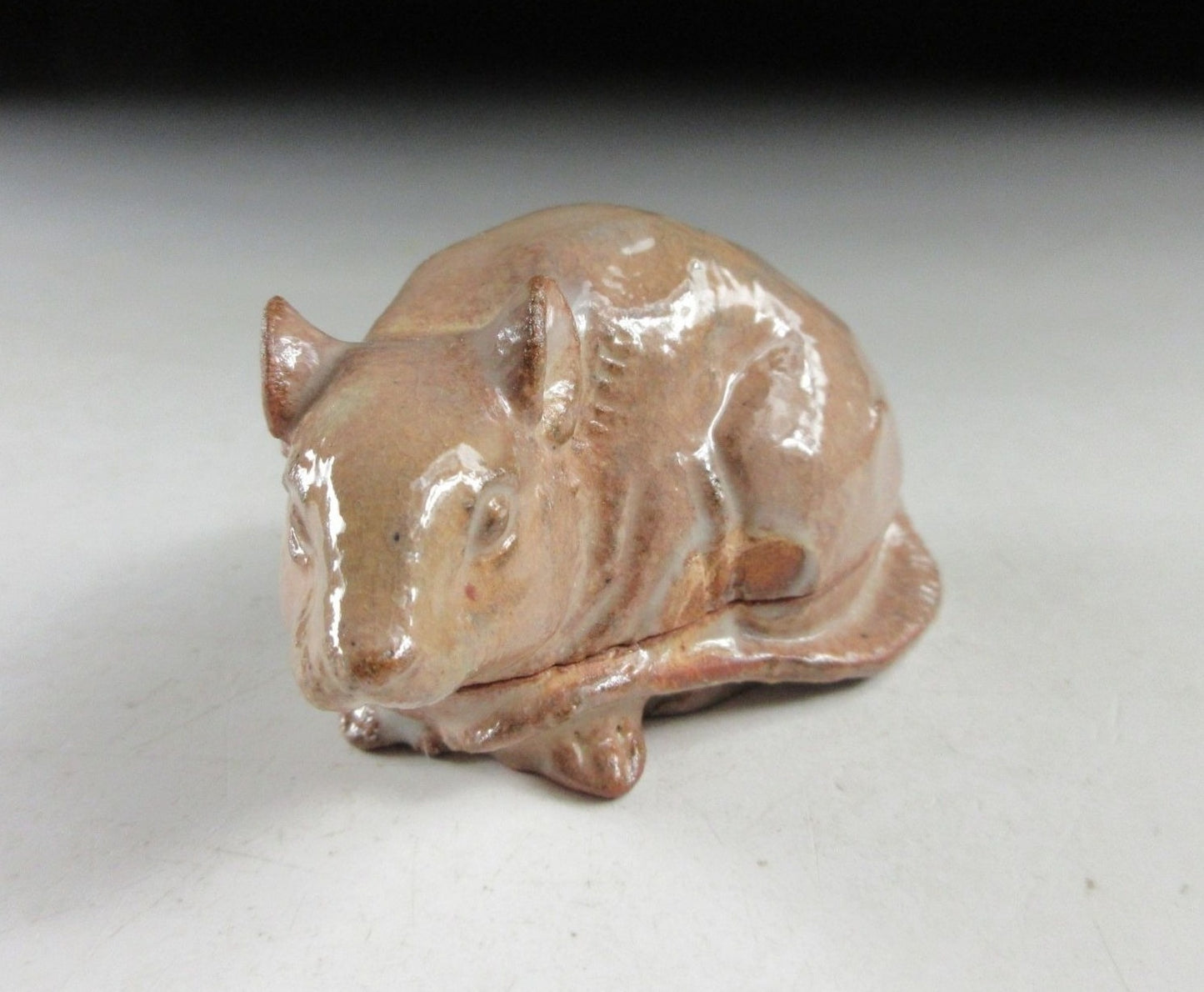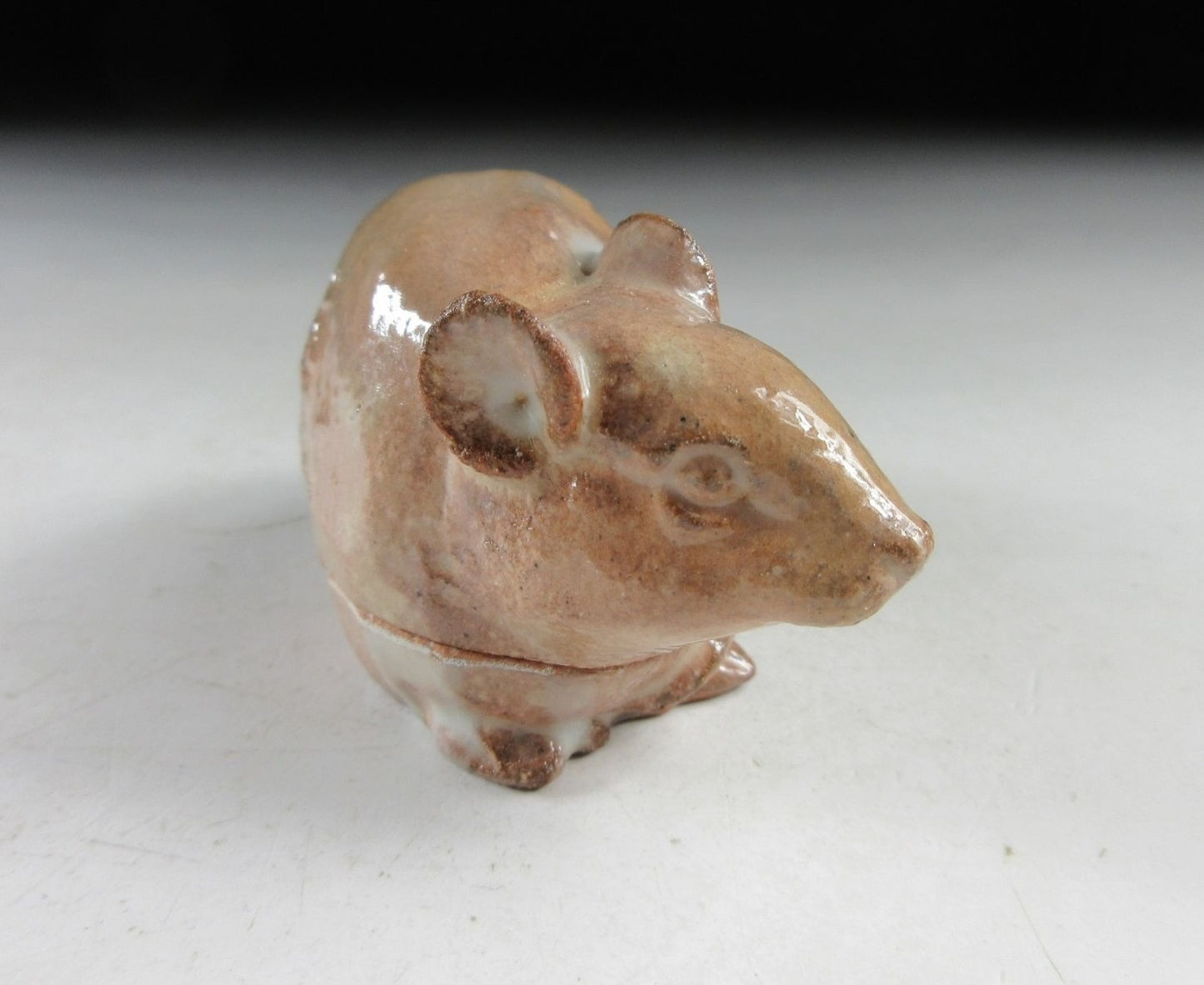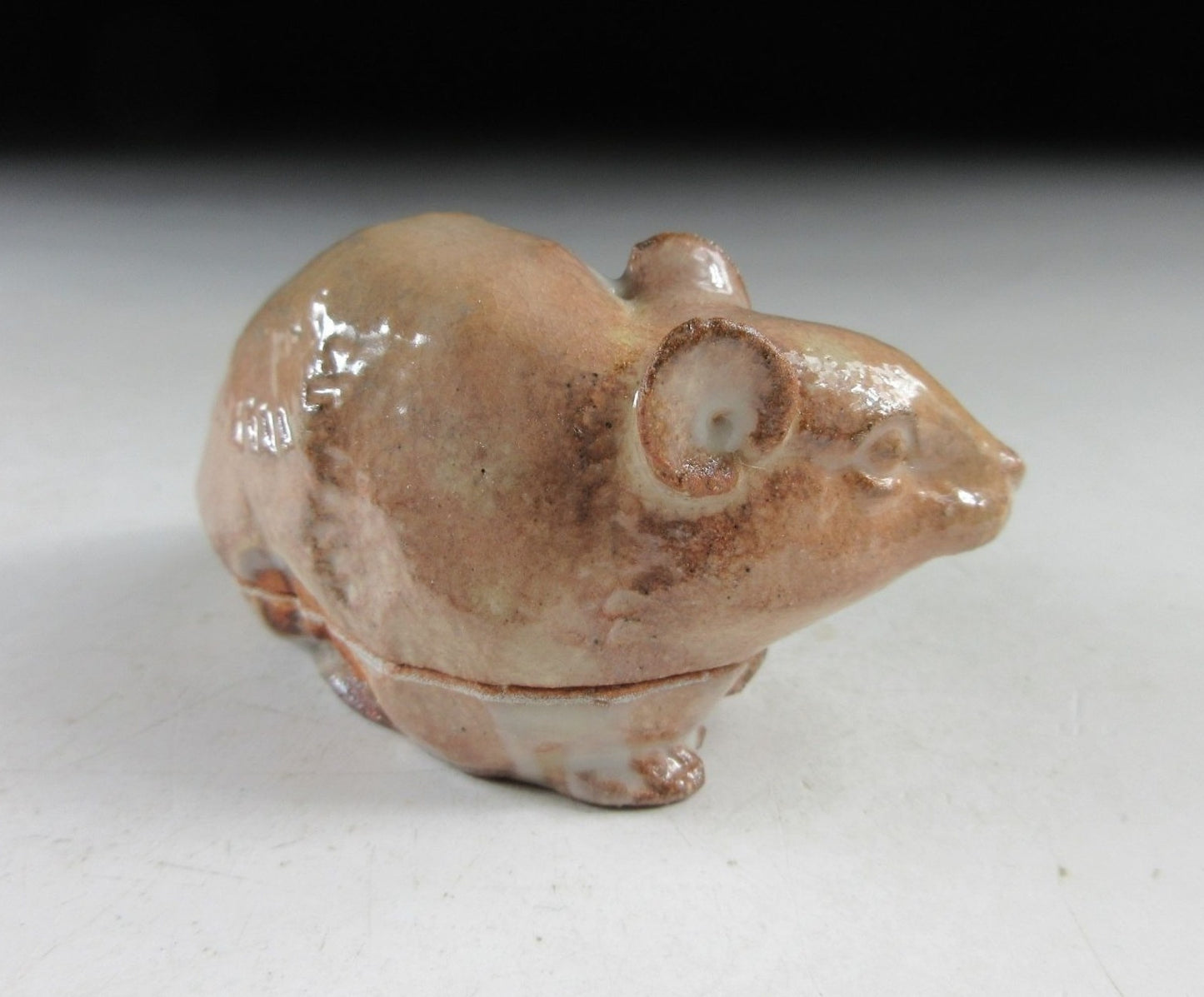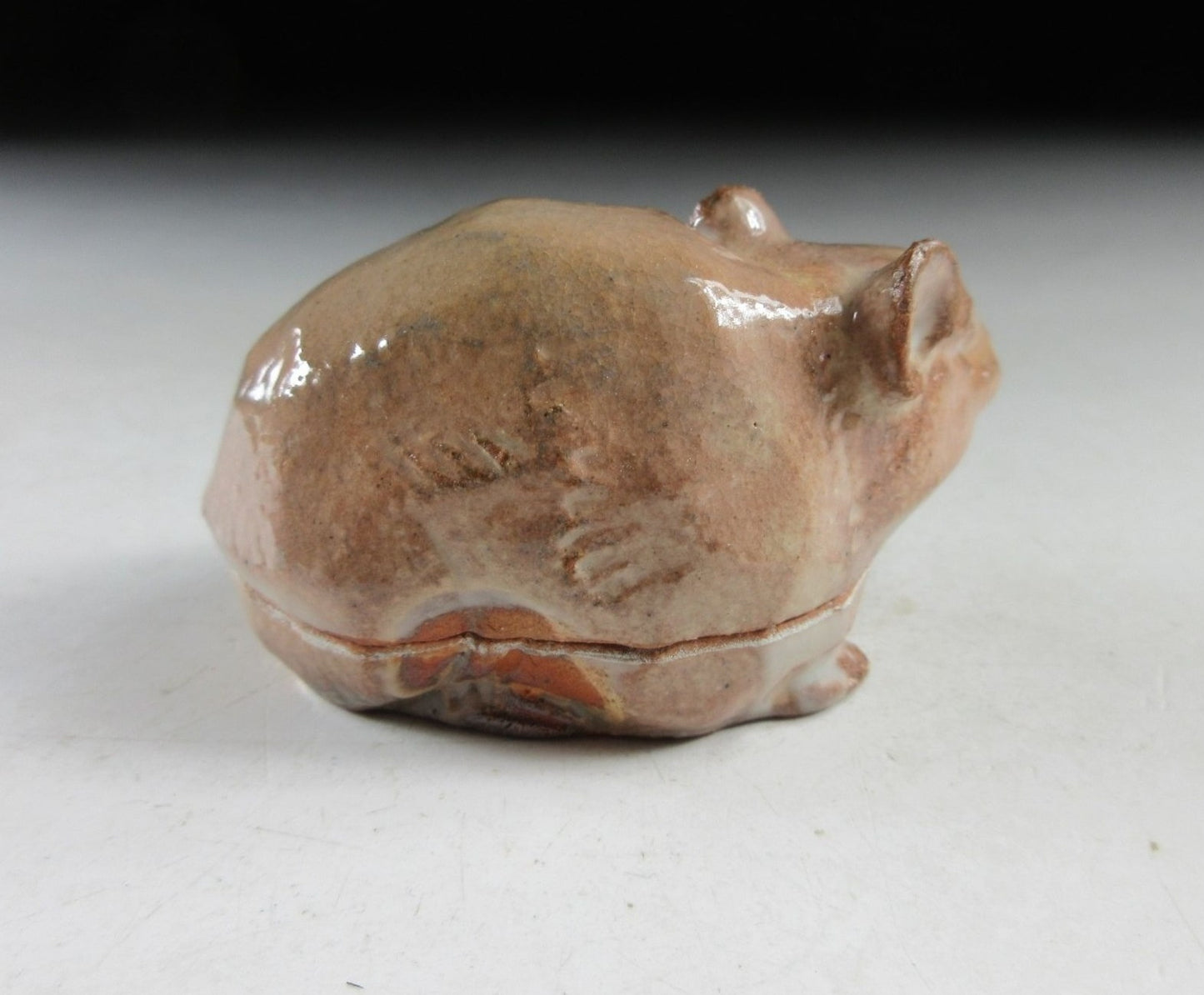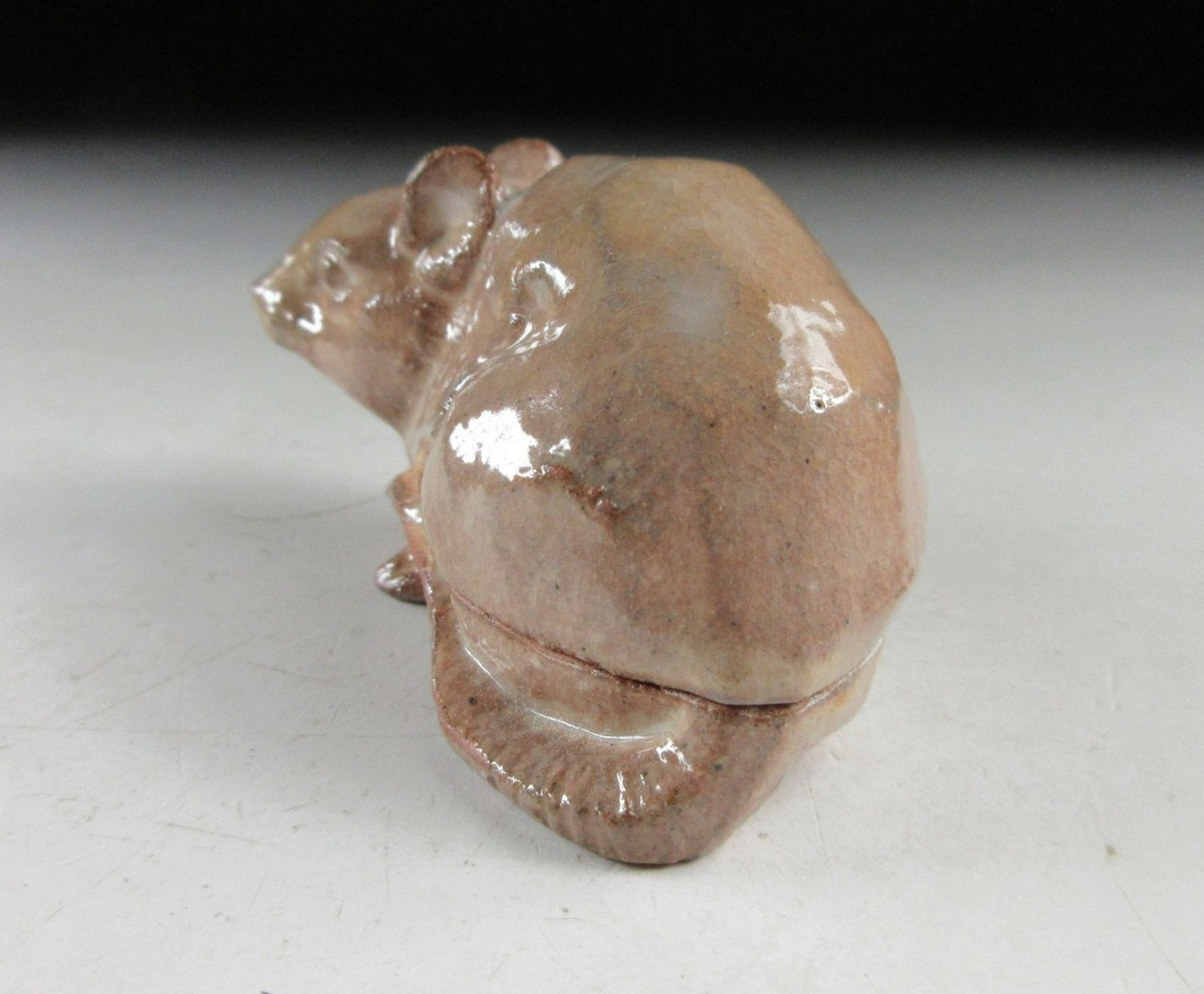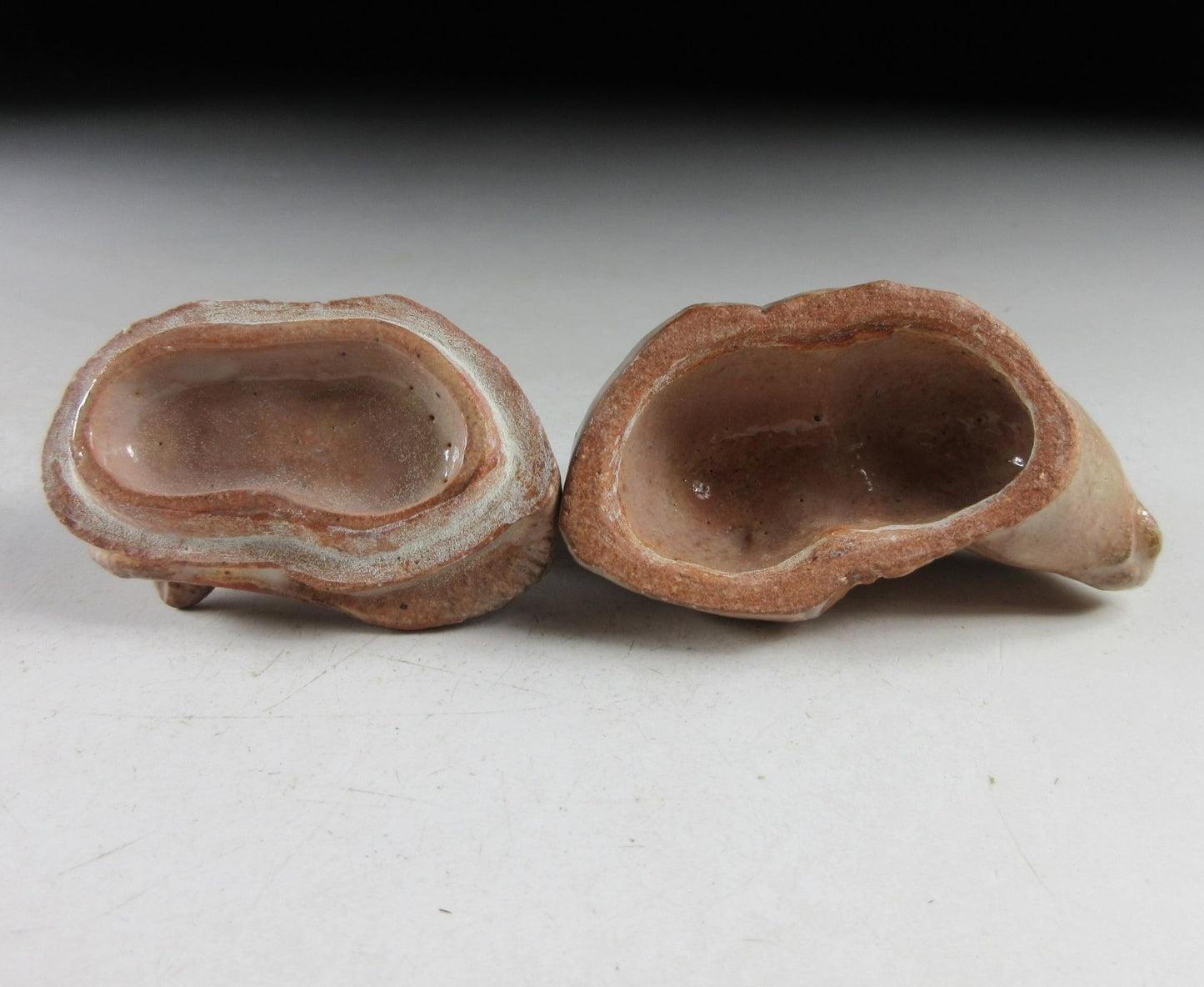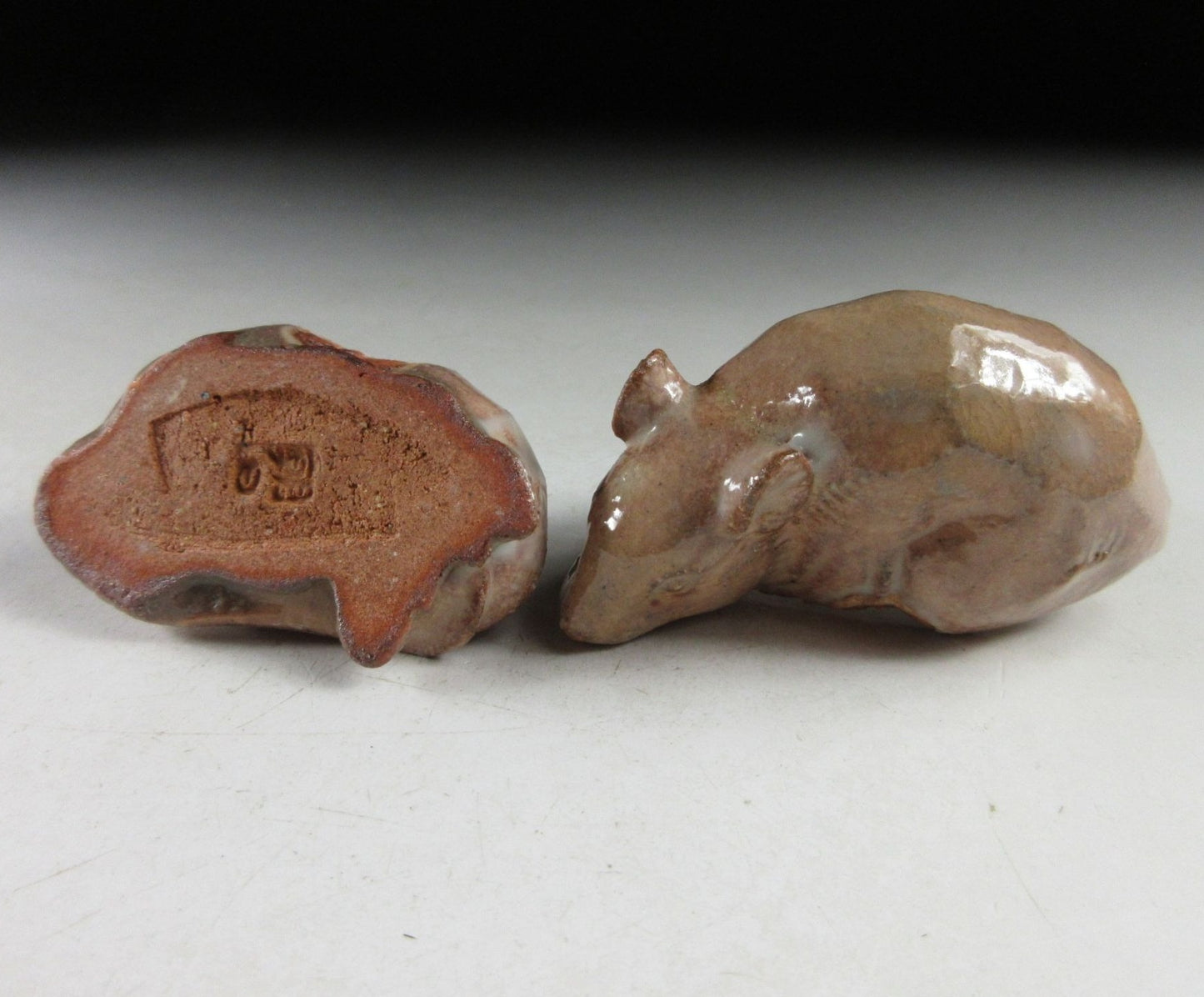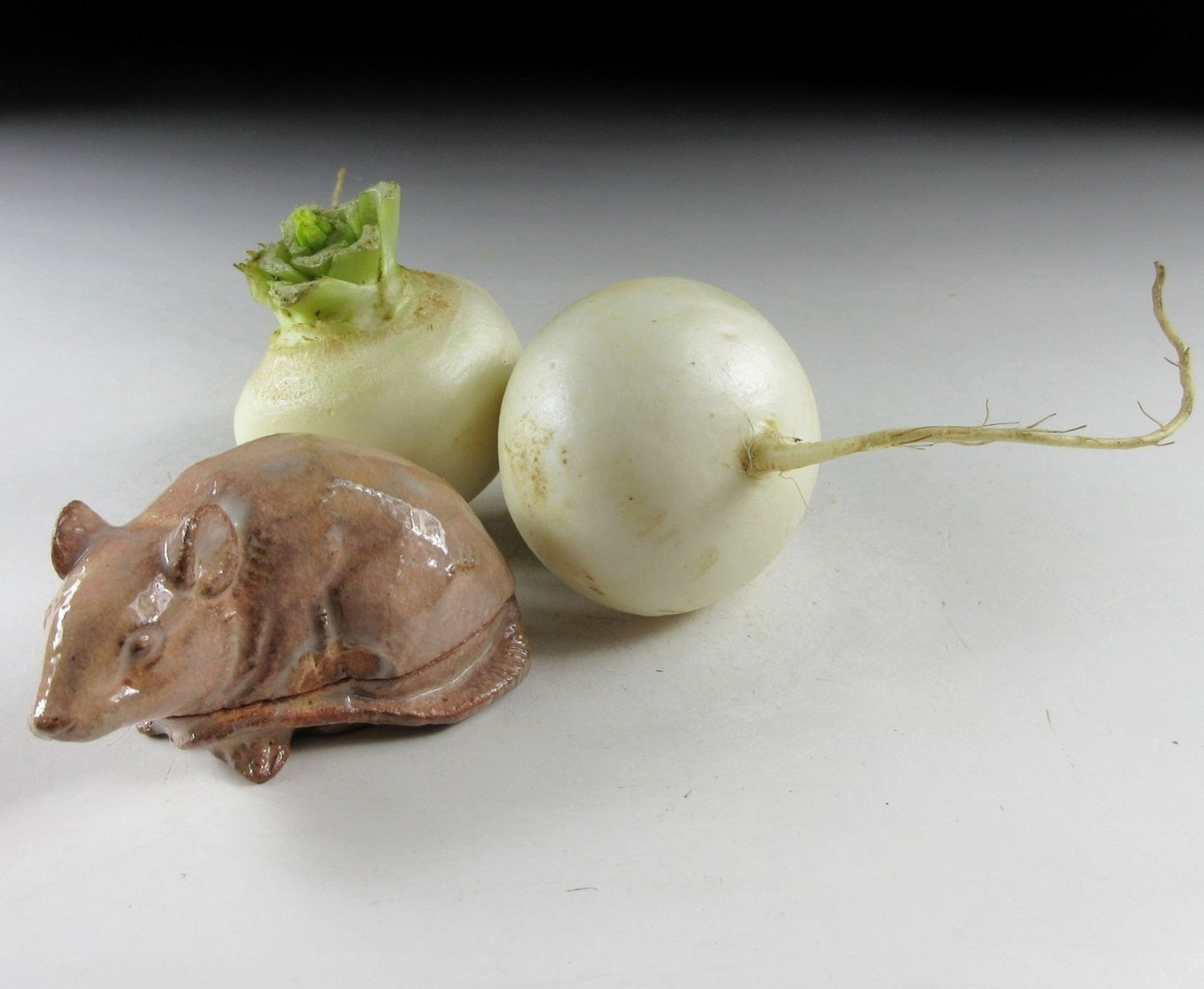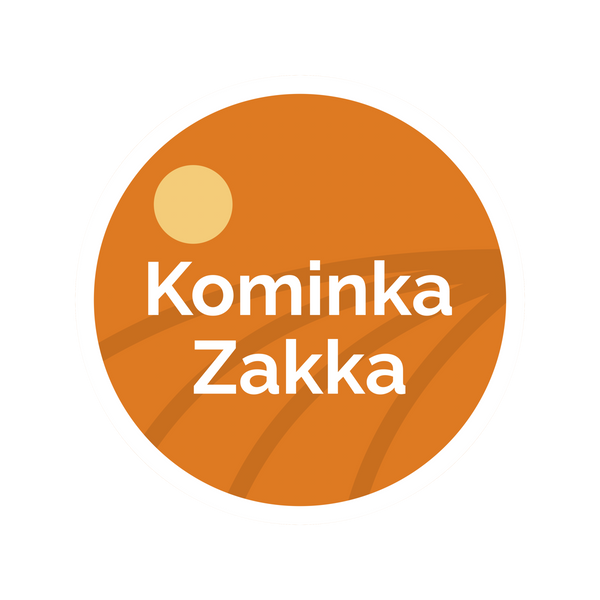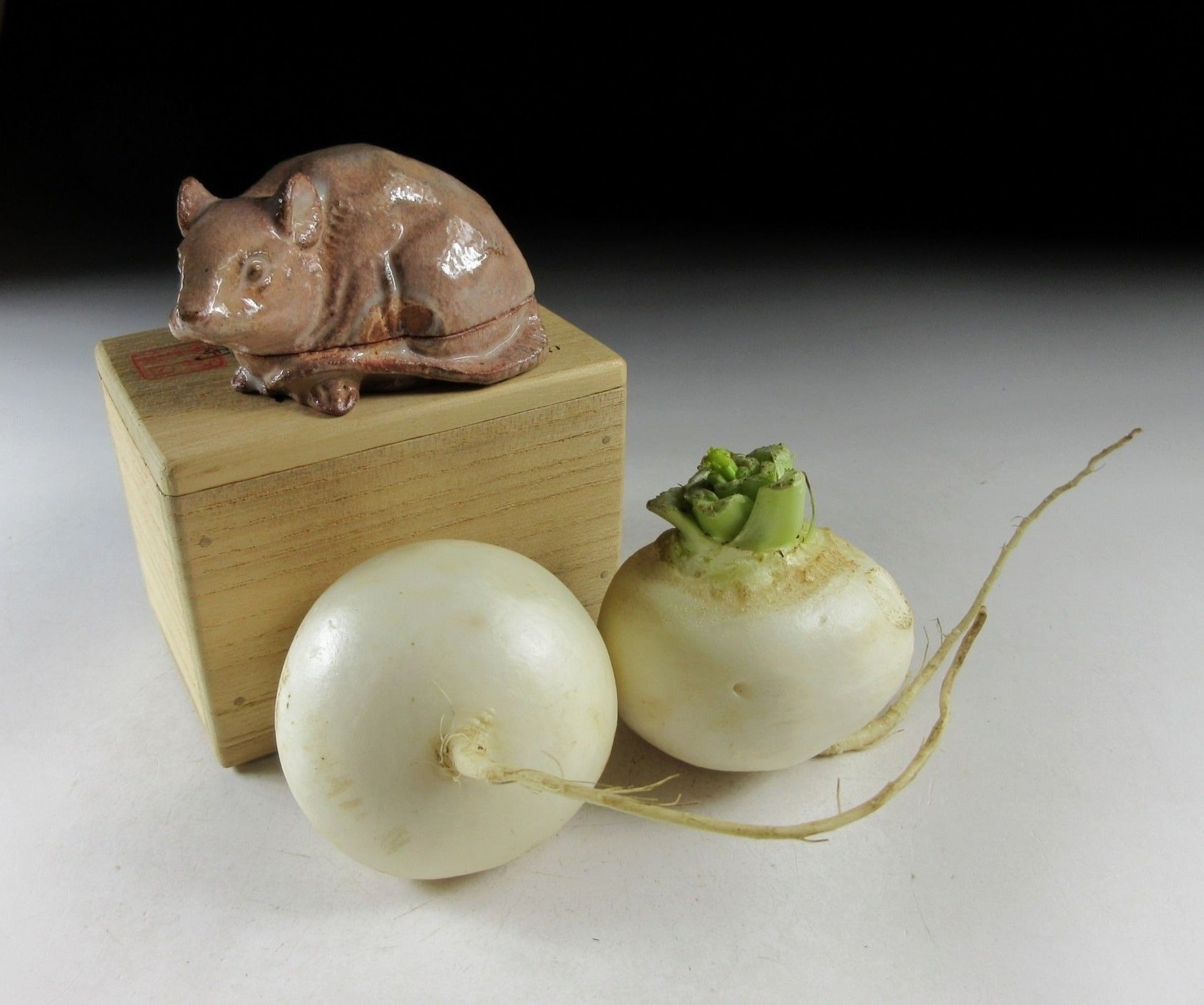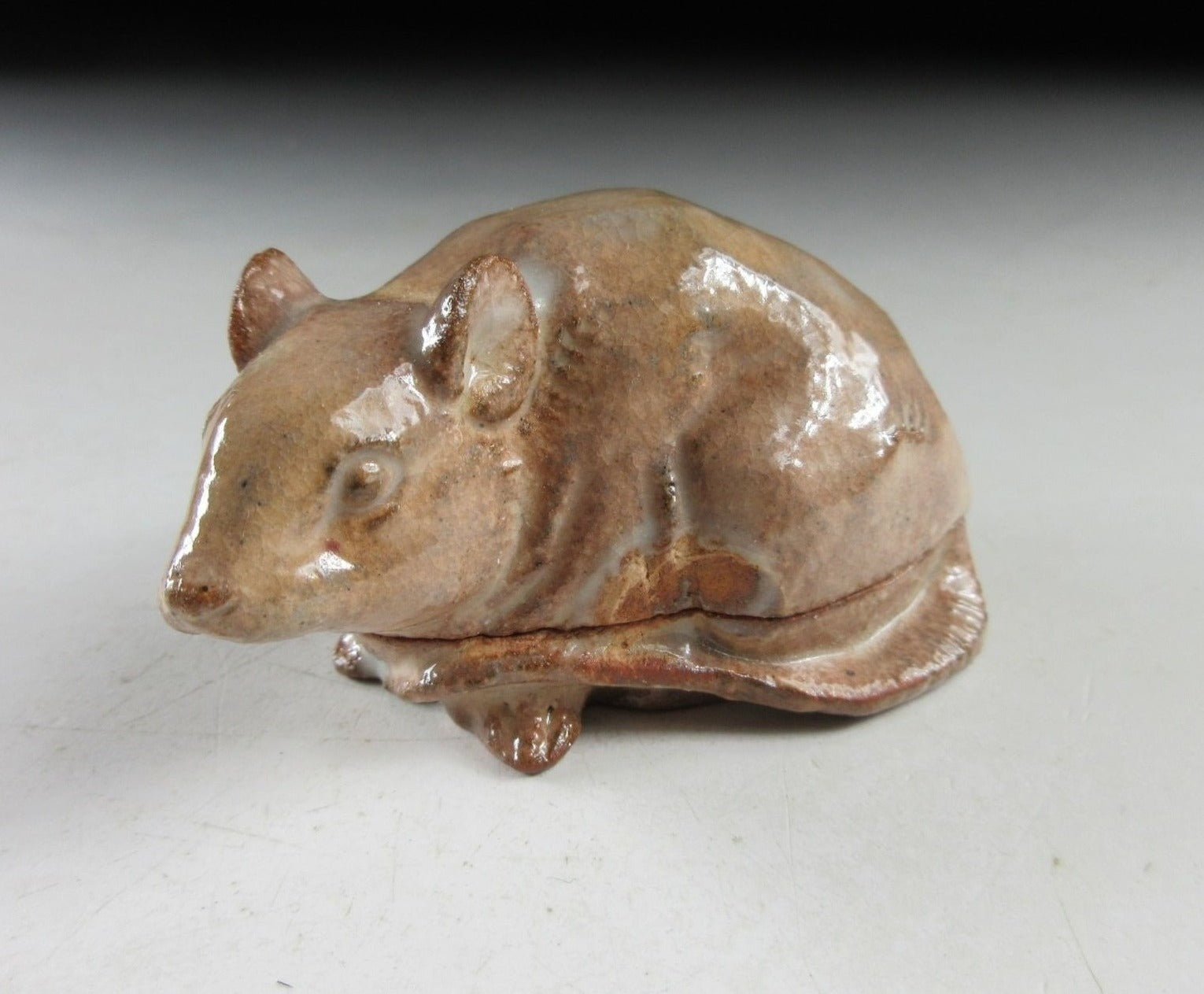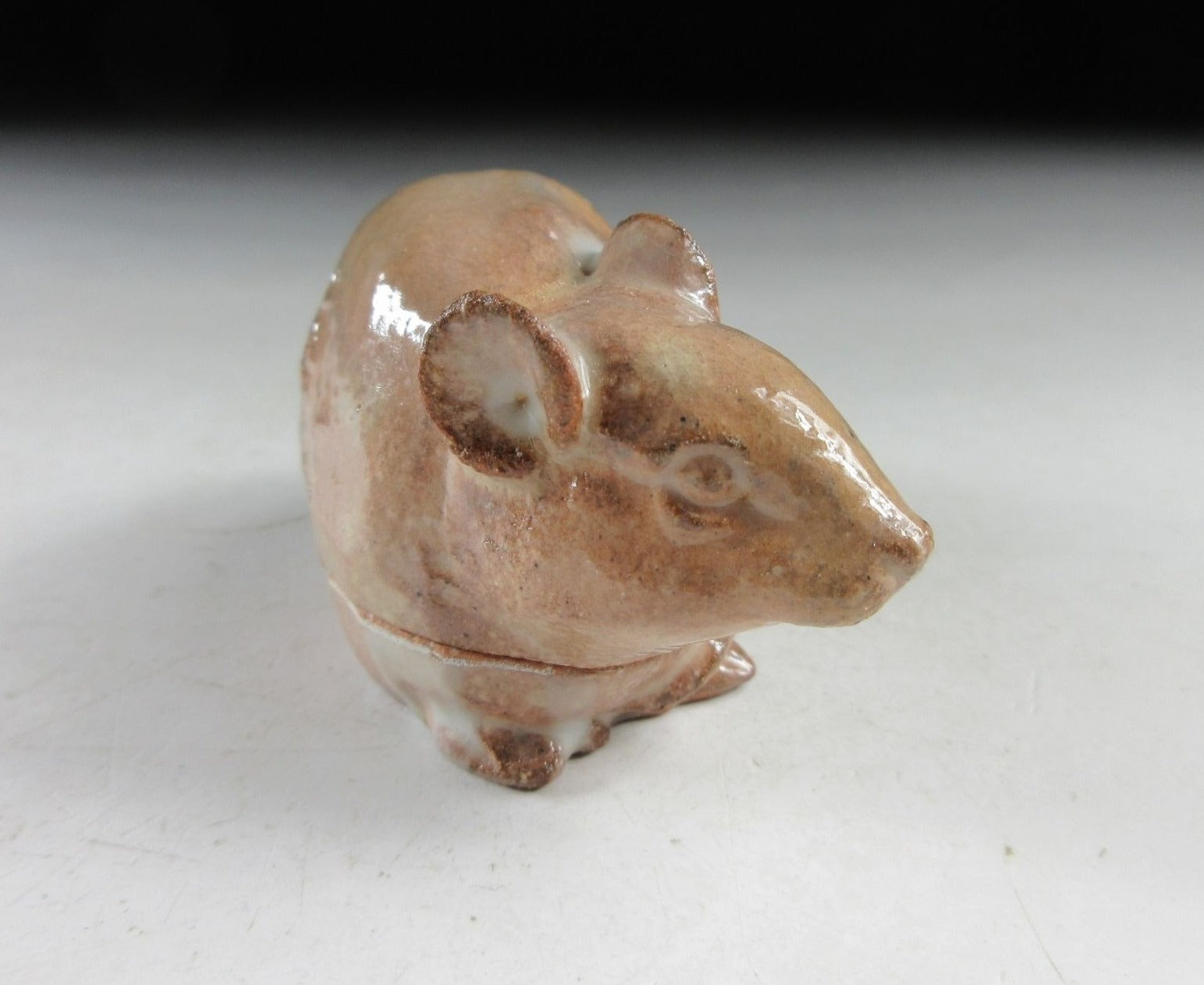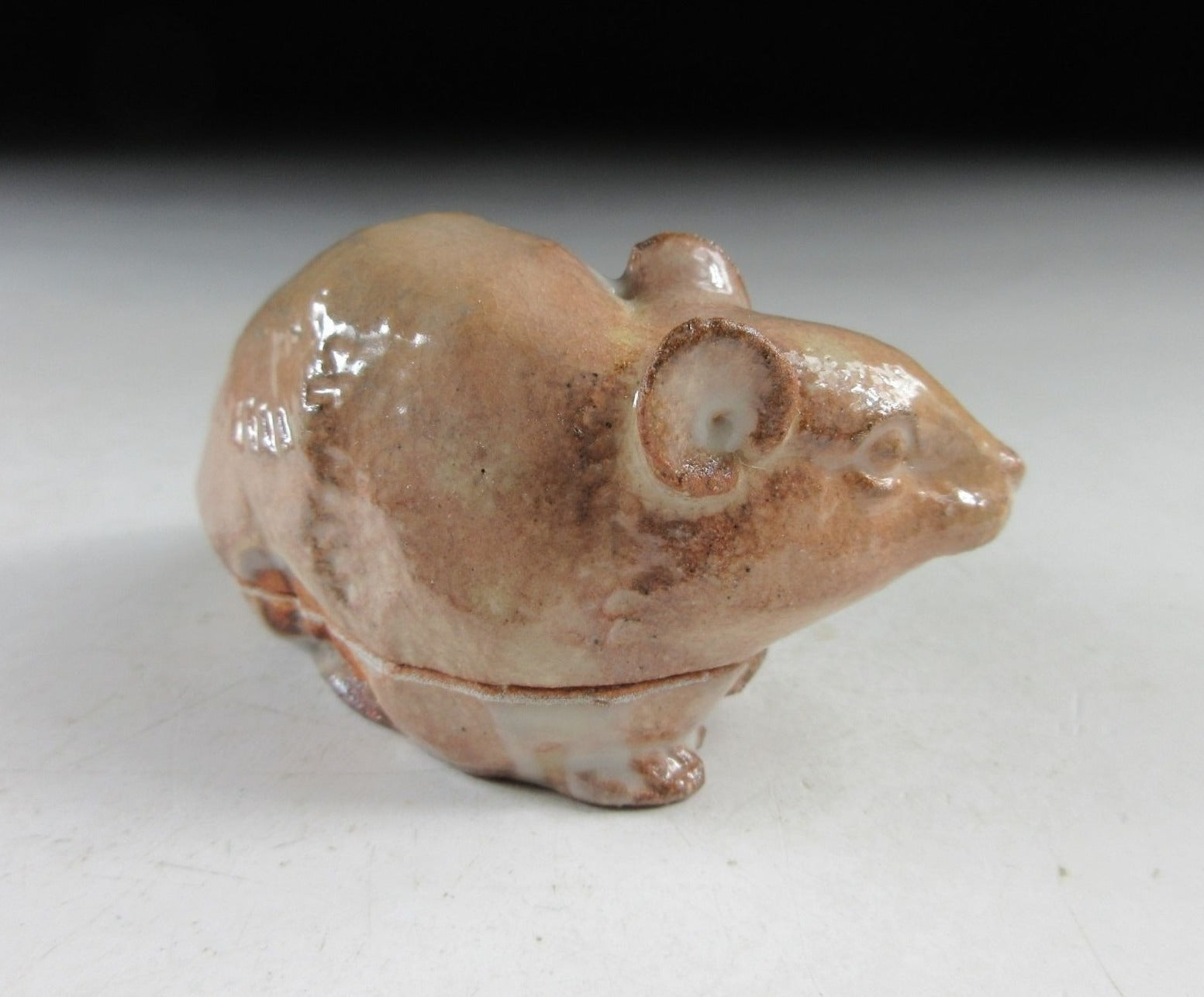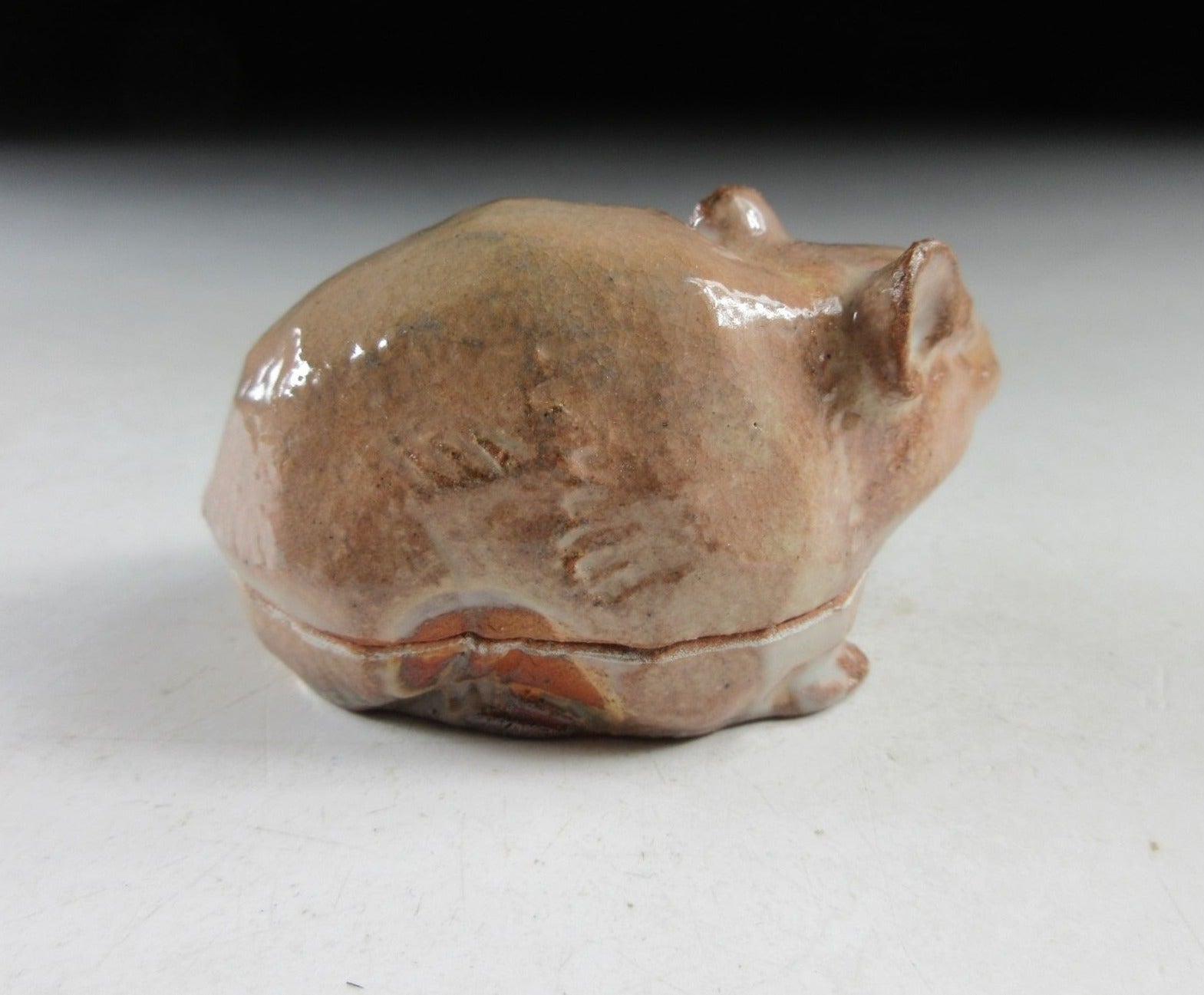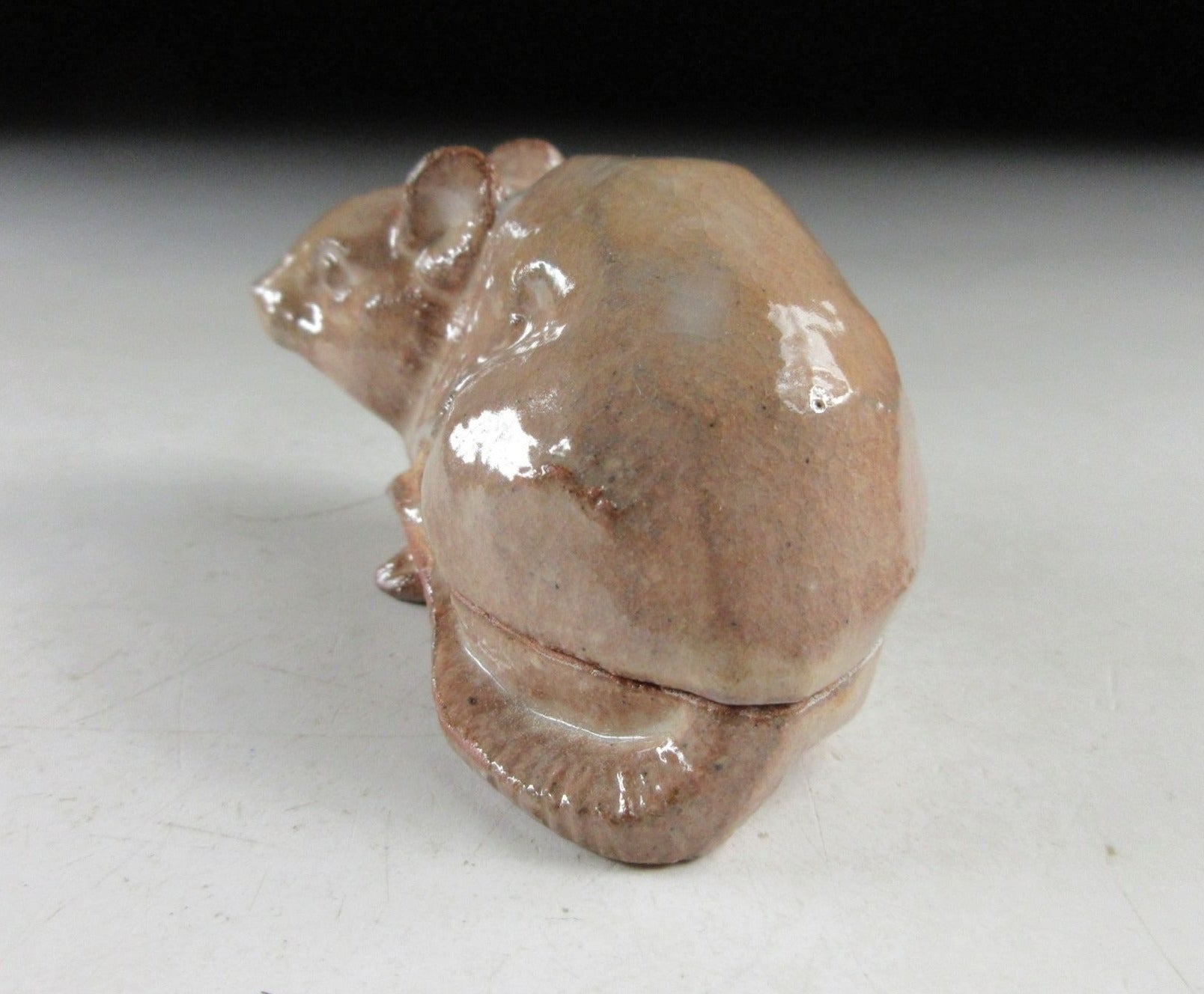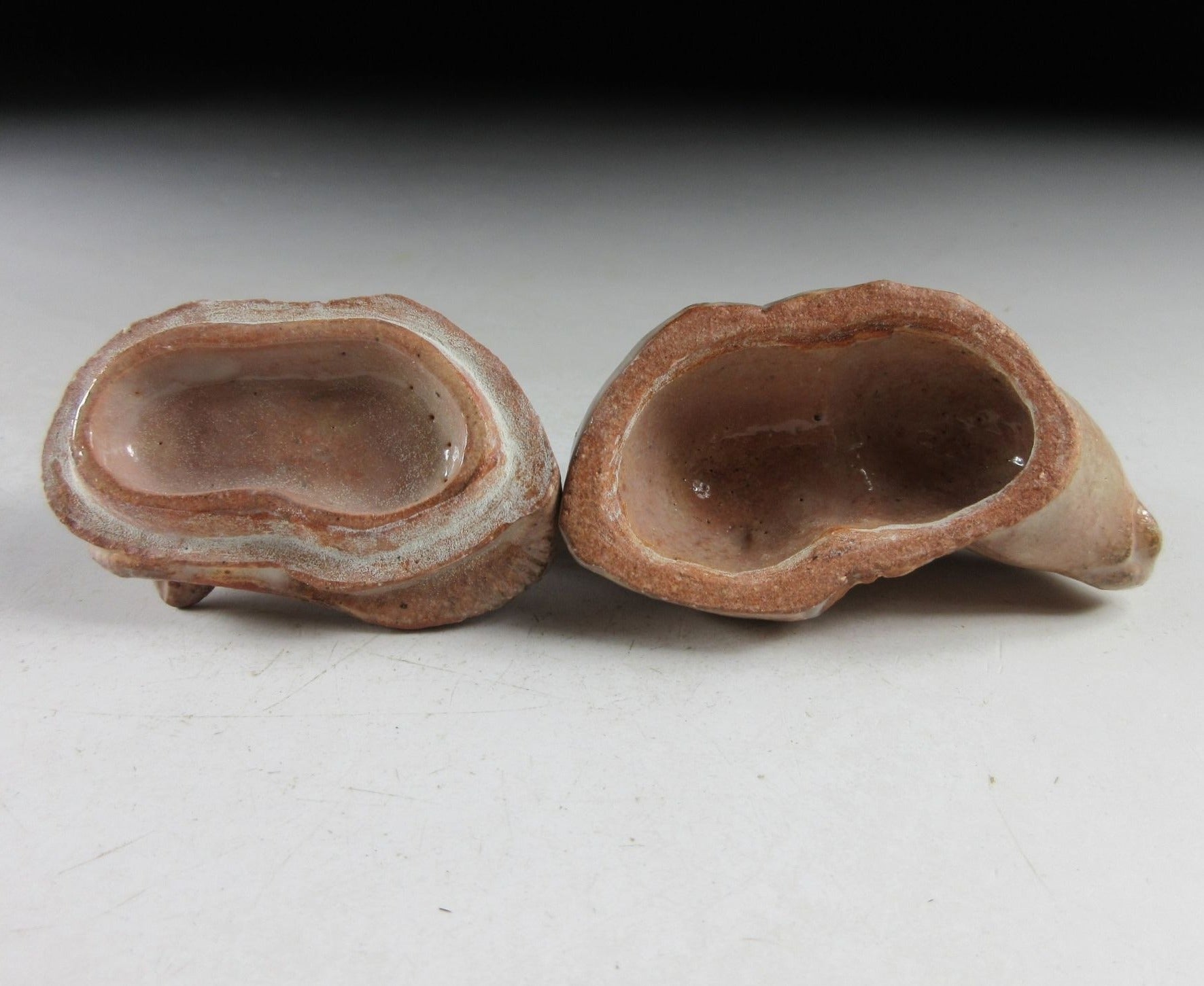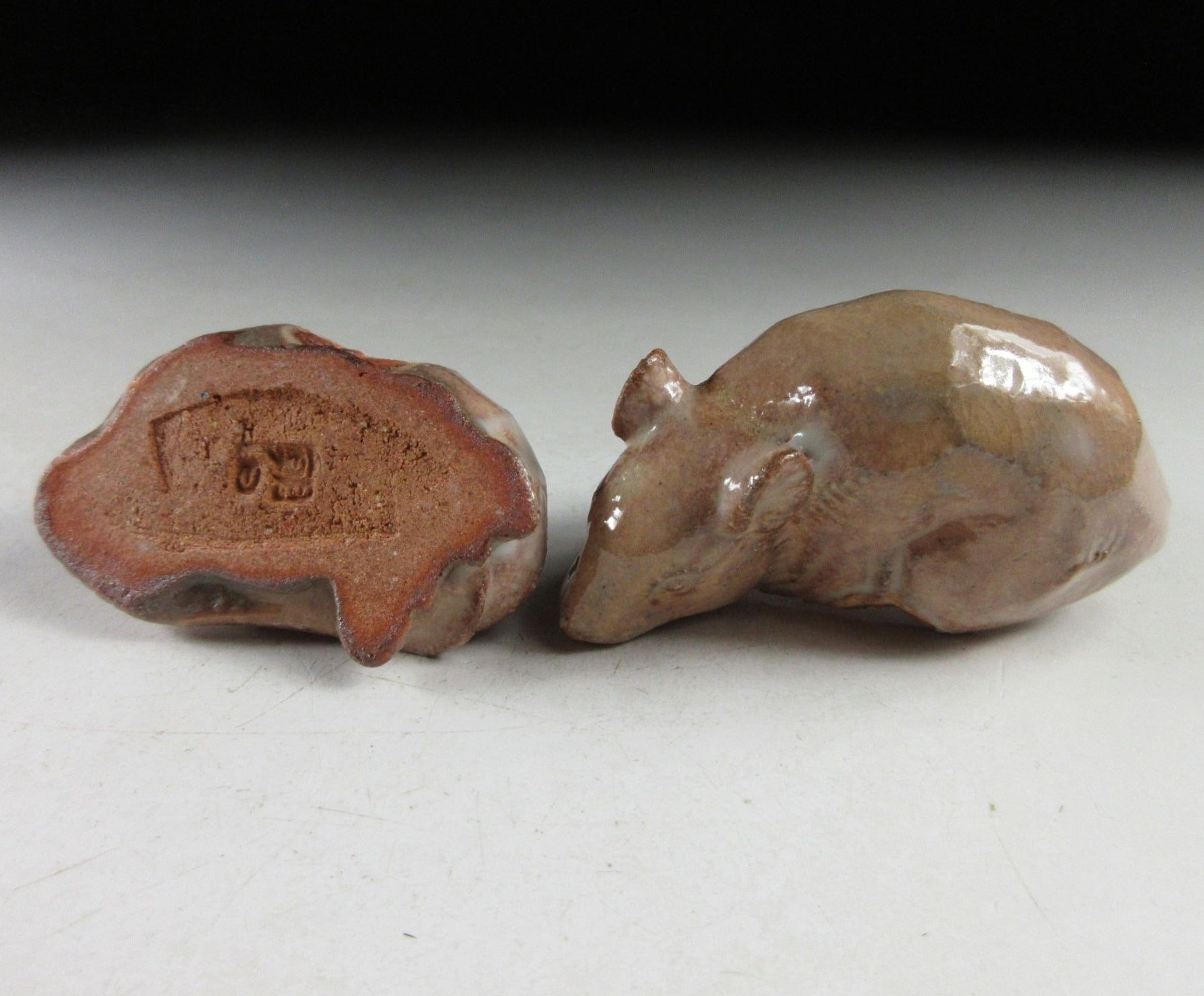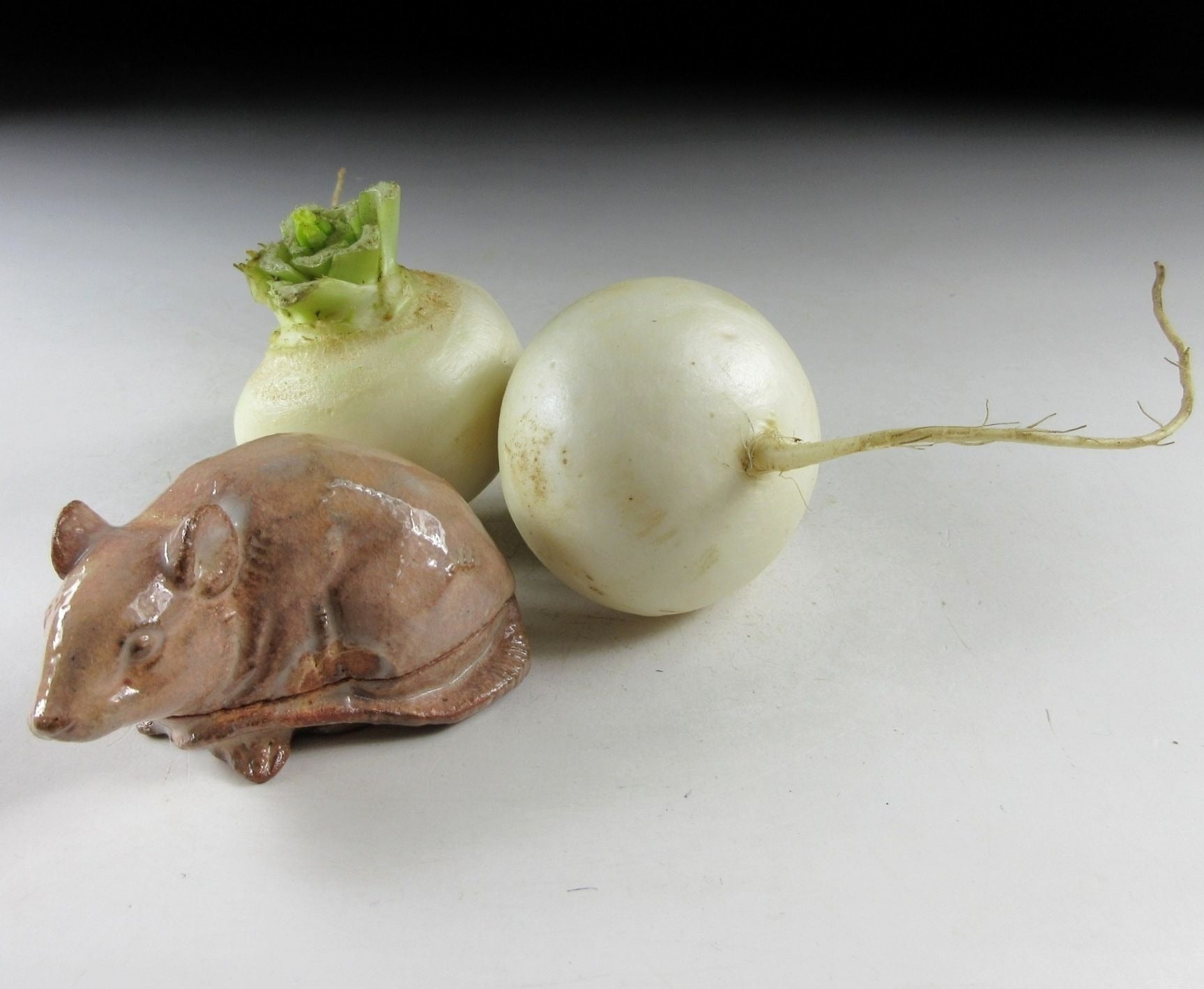Kominka Zakka
Asahi Hosai XIV Year of the Rat Kogo
Asahi Hosai XIV Year of the Rat Kogo
Couldn't load pickup availability
*SHIPPING OPTIONS VARY DEPENDING ON THE DESTINATION, PLEASE SCROLL TO THE END OF THIS LISTING FOR MORE DETAILS.
This listing is for an Asahi-ware kogo made around 20 years ago by Asahi Hosai XIV. It is moulded to resemble a rat and coated in transparent white glaze. Its size and shape is suitable for both woodchip and kneaded incense, although pottery kogo are typically used for kneaded incense during the cooler months. This piece was most likely made to commemorate the Year of the Rat back in 1996. The stamp of the potter can be found on the bottom, and it comes with its original signed storage box. It also comes with a stamped yellow wrapping cloth for when the item is not in use.
Asahi Hosai (b. Toyohiko Matsubayashi 1921-2004) was an Asahi-ware potter and 14th generation master of Asahi Gama. Asahi Gama opened in the early 17th century on the banks of the Uji River, and its purpose was to produce teaware under the instruction of tea master Kobori Enshu. The first three generations produced only teaware, the next four generations produced teaware along with roof tiles, and the eighth generation switched back to just teaware. The 14th generation graduated from the Kyoto Municipal Technical College in 1936, and he continued his studies and graduated from the National Ceramics Institute in 1943. During his time at the National Ceramics Institute he studied under master potter Mizumachi Kazusaburo and worked as an assistant for one year. Three years later in 1946 he became the 14th generation master of the family kiln, and began studying under master potter Kusube Yaichi. He began exhibiting at public exhibition and in 1947 his work was selected for the prestigious Nitten exhibition. He held his first solo exhibition in 1958 which became the first of many. In 1971 he built a smokeless noborigama climbing kiln, and in 1975 he extended it and added an annex. Prince Mikasa attended the first firing after the extension and named the kiln ‘Gen Gama’, and he gave the 14th generation the name of ‘Hosai’. Around 1980 he succeeded in producing wares with a faint red colour, something that was not possible using conventional Asahi-ware techniques. In 1995 he received the patronage of Daitokuji temple and received the title of ‘Genkoan’ from Daitokuji Chief Abbot Fukutomi Settei. **Fellow sellers, this information was researched by Kominka Zakka and CANNOT be used in your own listings.
Asahi-ware, one of the Seven Kilns of Enshu, refers to pottery produced in the Uji district of Kyoto. Uji is famous for tea, and was a major tea producing area during Sen no Rikyu’s time. Traditionally Asahi-ware consisted of mainly tea bowls and hobin style teapots, shaded teas like gyokuro were seldom brewed in kyusu. The clay is light coloured, and the glazes and decoration subtle in appearance.
Kogo are for holding incense during the tea ceremony. Kogo vary depending on the season. In summer wooden kogo are used for holding chips of incense wood, and in winter ceramic kogo are used for holding kneaded incense intended for the hearth. During the tea ceremony, incense is added to the charcoal fire during the charcoal-laying procedure.
Sizes
Box: H.6.5cm (2.5”) x 8.8cm (3.4”) x 6.1cm (2.4”)
Kogo: H.3.4cm (1.3”) x L.7cm (2.7”) x W.4.4cm (1.7”)
Condition
It’s in very good condition with no chips or cracks.
THESE ARE SHIPPING ESTIMATES BASED ON THE CURRENT GLOBAL SITUATION
**Germany, France, Greece, Spain, Poland, Austria, Slovakia, Lithuania, Slovenia: NO SHIPPING. Very strict and expensive packaging laws in place and we are not licensed to send products to these countries. We have no plan to register at this time because the process is in some cases very expensive and complicated, plus each country has its own set of regulations and application process.
**USA, UK, Canada, Australia, New Zealand, Switzerland, Norway: Airmail Small Packet (approx. 15-28 days). Combined shipping available up to 2kgs for Airmail Small Packet (please send us a message).
**Asia: Airmail Small Packet (approx. 15-21 days). Combined shipping available up to 2kgs for Airmail Small Packet (please send us a message).
**Central Asia, Middle East, South Africa, Brazil, Mexico: EMS Express 10-15 days.
**Russia: No shipping methods available.
Share
